To form a jeep, two squares of side length 10cm & 20cm and two circles of perimeter 15cm each are connected as shown. The centre of bigger square is at origin and x−y axes are as shown. The x coordinate of centre of mass of this model is :−
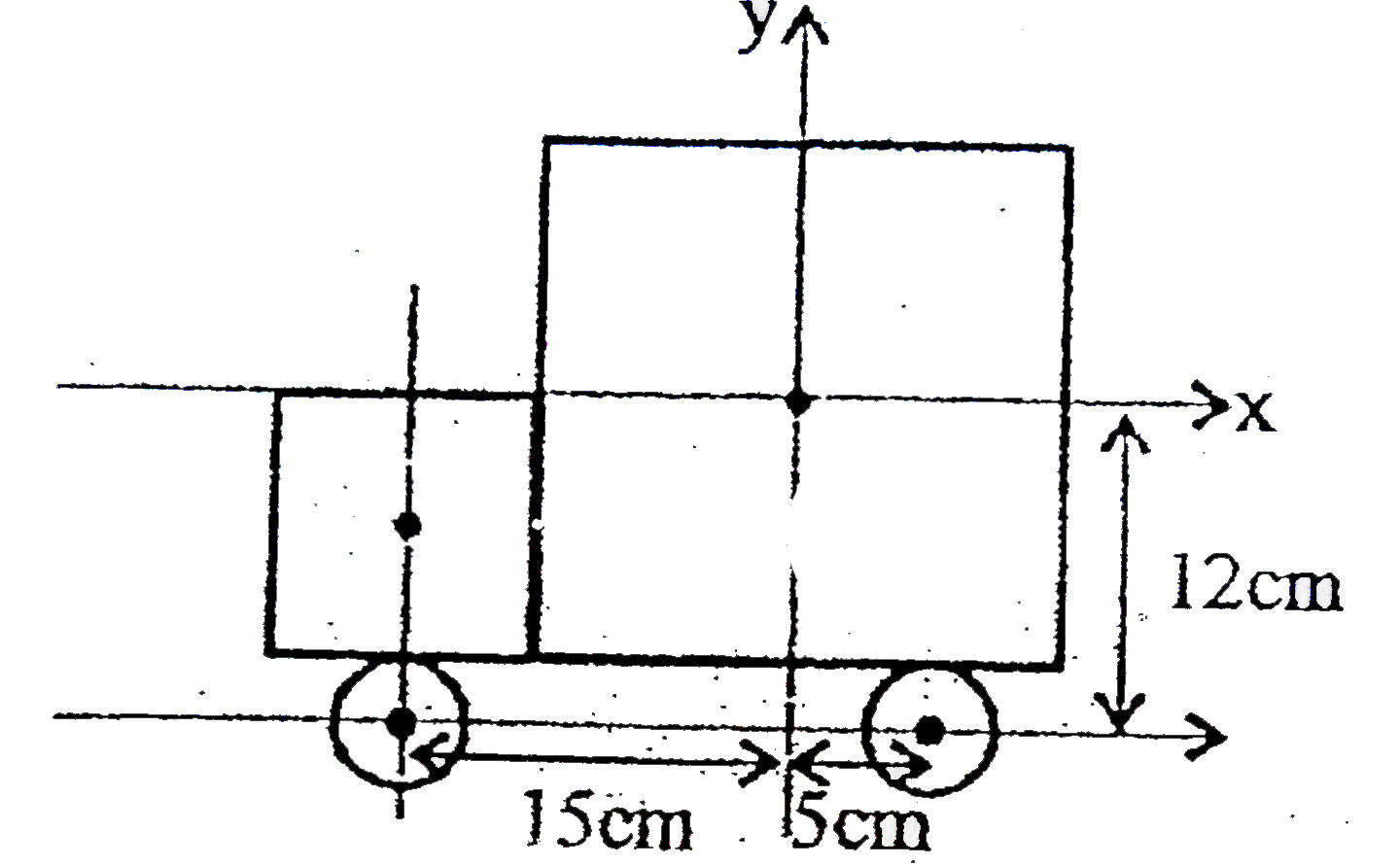
x=−5cm
x=−9cm
x=−3cm
x=2cm
The correct Answer is:A
Ans (1)
x=80×0+40×(−15)+15×(−15)+15×580+40+15+15
=−5cm
Topper's Solved these Questions
- TEST PAPERBOOK - ALLENCHAPTER - TEST PAPEREXERCISE - PHYSICS
4 Videos
- TEST PAPERBOOK - ALLENCHAPTER - TEST PAPEREXERCISE - PHYSICS
4 Videos
- SIMPLE HARMONIC MOTIONBOOK - ALLENCHAPTER - SIMPLE HARMONIC MOTIONEXERCISE - Example
1 Videos
- TEST PAPER 1BOOK - ALLENCHAPTER - TEST PAPER 1EXERCISE - PHYSICS
11 Videos
Similar Questions
Two identical rods each of mass m and length are connected as shown. Locate c.m.
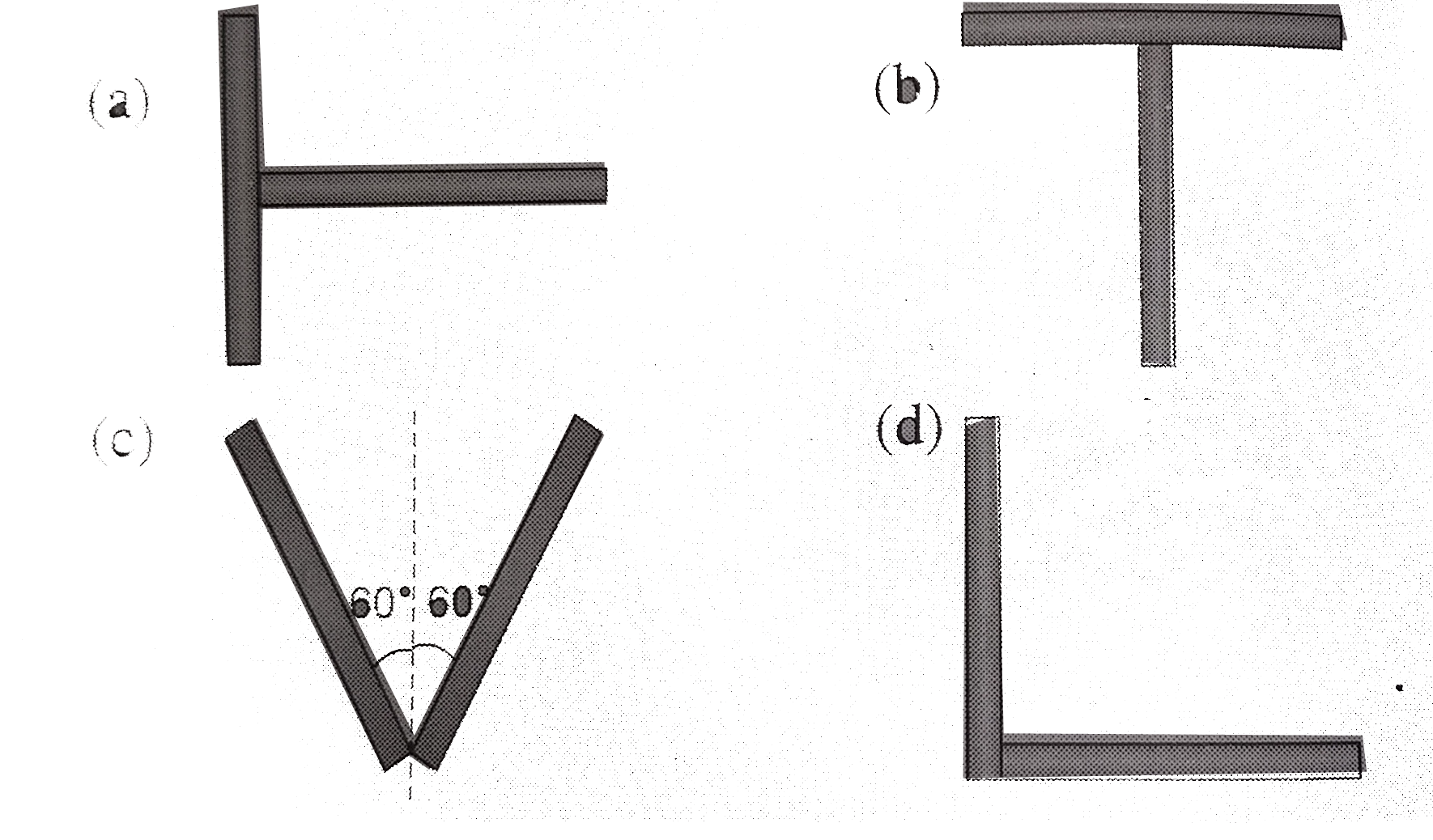
View SolutionA disc (of radius r cm) of uniform thickness and uniform density σ has a square hole with sides of length l=r√2cm. One corner of the hole is located at the centre of the disc and centre of the hole lies y-axis as shown. Then the y-coordinate of position of centre of mass of disc with hole (in cm) is.
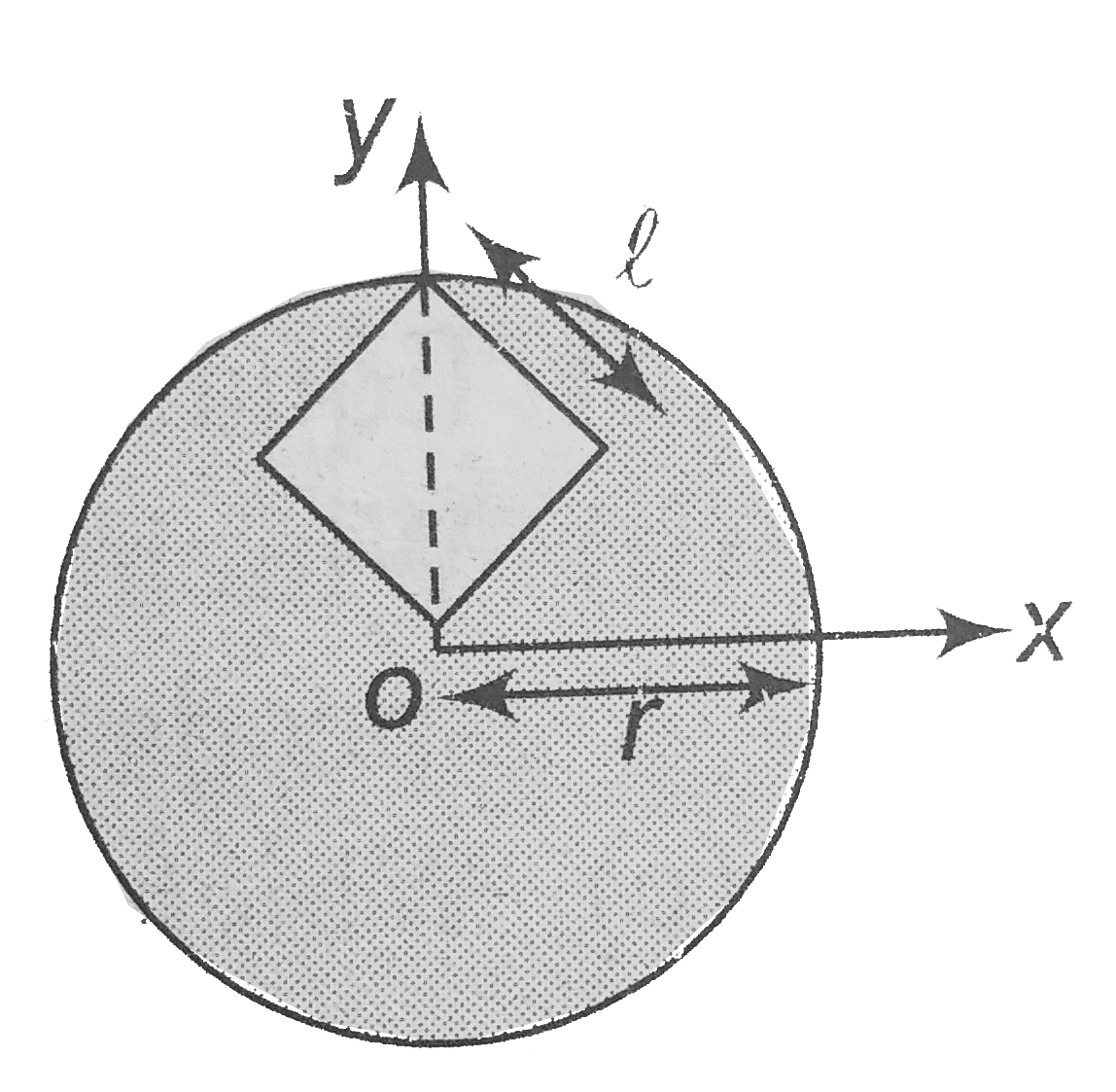 .
.
View SolutionFrom a 16cm×8cm rectangular uniform plane sheet, exactly one quarter of the sheet is removed as shown in figure. If the origin be taken at the centre of the sheet considered as shown in the figure the coordinates of the centre of mass of the remaining sheet is
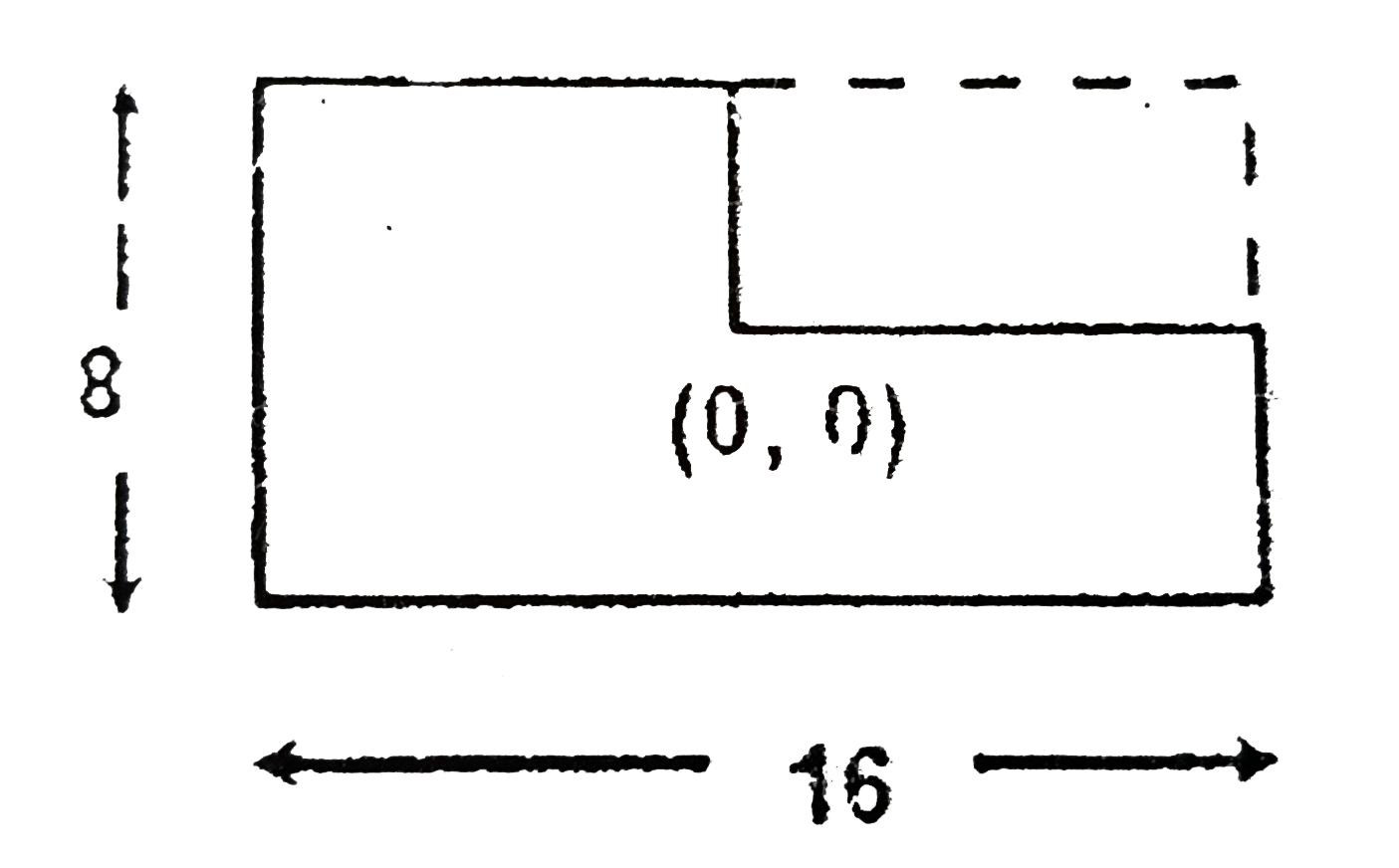
View SolutionFour point charges are placed at the corners of a square ABCD of side 10 cm, as shown in figure. The force on a charge of 1μC placed at the centre of square is
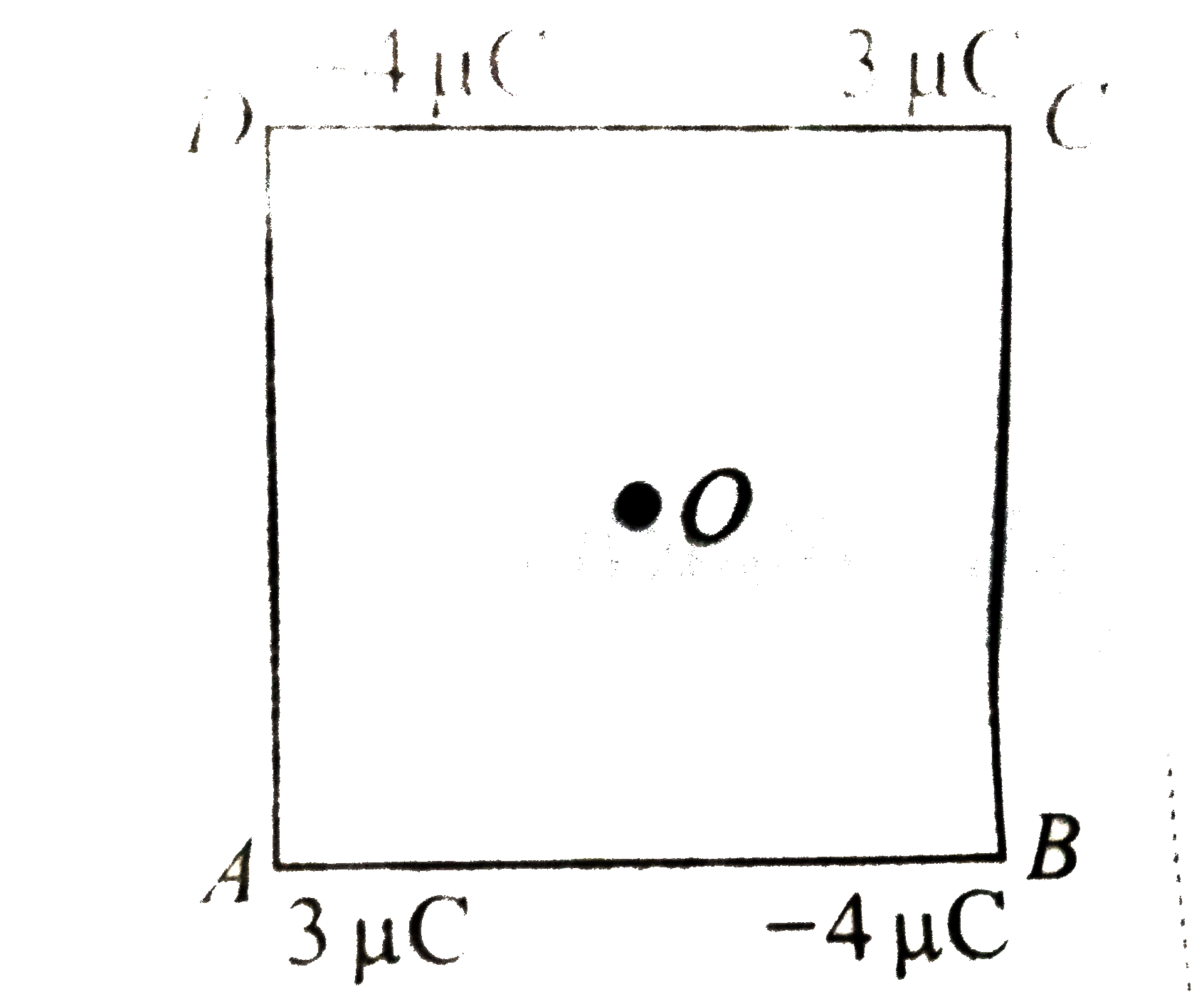
View SolutionTwo sides of a triangle are 15cm and 20cm. The perimeter of the triangle is 50cm. What is the third side?
View SolutionSum of the areas of two squares is 400 cm. If the difference of their perimeters is 16 cm, find the sides of the two squares.
View SolutionSum of the areas of two squares is 400 cm. If the difference of their perimeters is 16 cm, find the sides of the two squares.
View SolutionFrom each corner of a square of side 4 cm a quadrant of a circle of radius 1 cm is cut and also a circle of diameter 2 cm is cut as shown in Fig. 12.23. Find the area of the remaining portion of the square.
View SolutionFrom each corner of a square of side 4 cm a quadrant of a circle of radius 1 cm is cut and also a circle of diameter 2 cm is cut as shown in Fig. 12.23. Find the area of the remaining portion of the square.
View SolutionFind the area of a trapezium whose parallel sides of lengths 10cm and 15cm are at a distance of 6cm from each other. Calculate this area as (a) the sum of the areas of two triangles and one rectangle. (b) the difference of the area of a rectangle and the sum of the areas of two triangles.
View Solution
